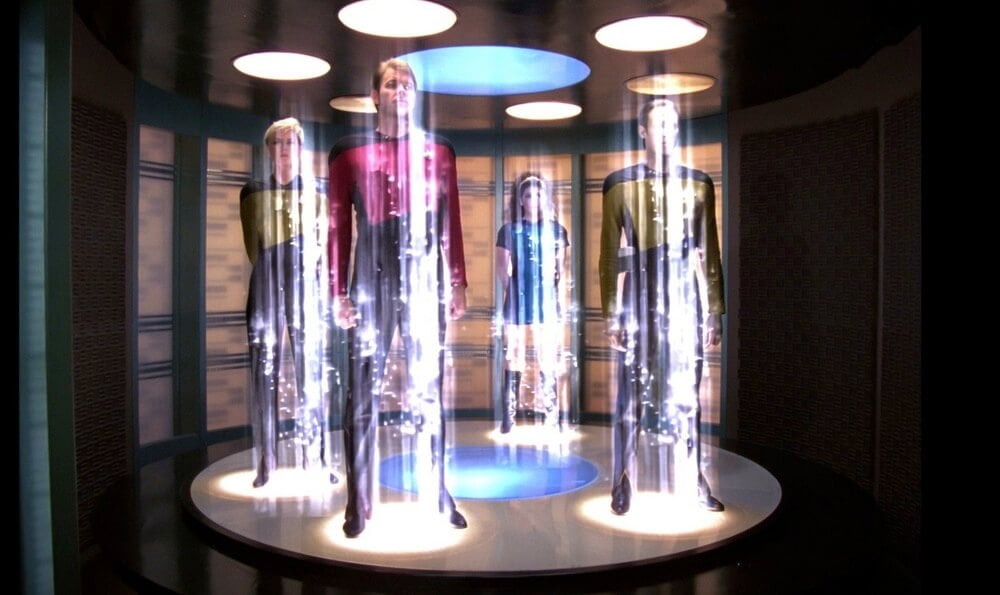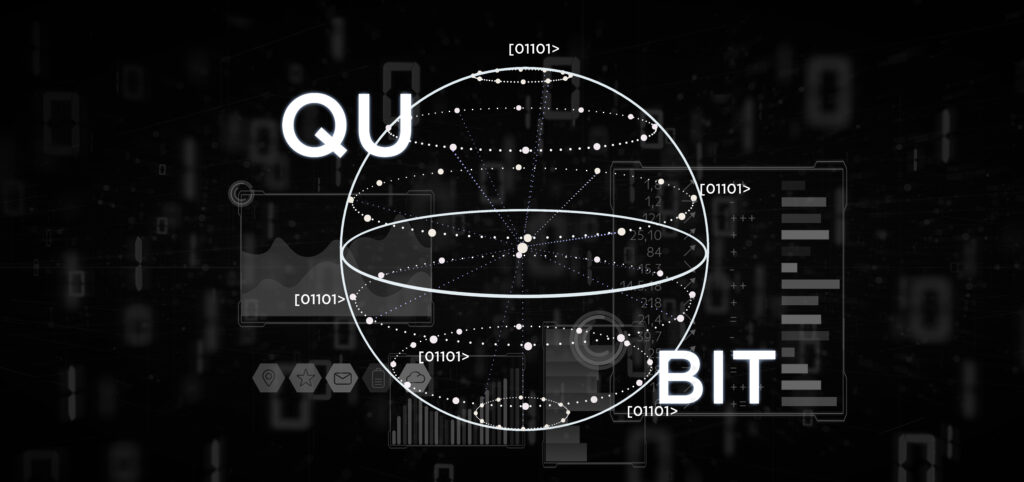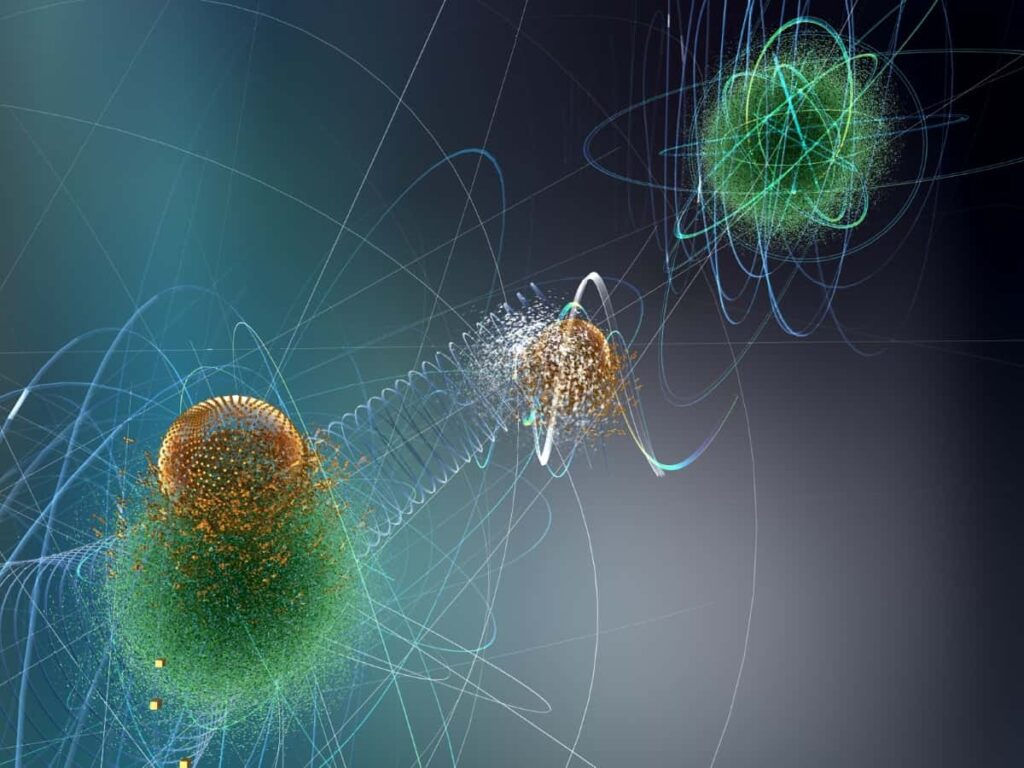Quantum Teleportation, already a reality

Quantum teleportation, a fascinating concept rooted in the principles of quantum mechanics, has captured the imagination of scientists. Unlike the teleportation of humans and tangible objects was only found in science fiction movies, quantum teleportation operates in the world of subatomic particles. While the idea of transporting matter across vast distances instantaneously remains firmly in the realm of imagination, the phenomenon of quantum teleportation has already become a tangible reality in the realm of quantum physics.
This text will explore the intriguing concept of quantum teleportation, explaning its theories, practical implications, and the remarkable advancements that have brought this once-mystical phenomenon into the realm of scientific exploration.
Important concepts

- Quantum Entaglement
First of all, we need to clarify the concept of quantum entanglement, that is the phenomenon responsible for making information teleportation possible.
The explanation of what is quantum entanglement resides in understanding the peculiar properties of subatomic particles. In the quantum world, particles like electrons, photons, and atoms can become intricately linked, regardless of the distance between them, like that one of that particles had a subatomic twin siter. This phenomenon is known as quantum entanglement.
When two particles are entangled, the quantum state of one is instantly affected by the state of the other, no matter how far apart they are. This means that any change in one particle will be immediately reflected in the other, even if there’s no conventional communication or transfer of information between them.
Quantum entanglement challenges our classical intuition so much so that Einstein, in his studies, stated that the concept of quantum entanglement seemed to contradict the principles of quantum mechanics, referring to this as “spooky action at a distance.”. He had a more classical and deterministic view of physics, and believed that the measurement outcomes of one particle should be predictable based on its real properties, regardless of the state of another entangled particle. However, it’s important to note that Einstein’s perspective did not prevail in the modern interpretation of quantum mechanics. Quantum entanglement has been experimentally confirmed, and the prevailing interpretation is that entangled particles are intrinsically connected, irrespective of the distance between them, even if it challenges our classical intuition.

- Qubit
Another important concept to understand this phenomenon is the “qubit”, short for “quantum bit,” is the basic unit of information in quantum computing, analogous to a classical bit in traditional computing. A better explanation of what a qubit is resides in understanding its fundamental role in quantum computing. Unlike classical bits that can exist as either 0 or 1, qubits can exist in a superposition of both states simultaneously, thanks to the principles of quantum mechanics.
This ability to be in a superposition is one of the key features that makes qubits so powerful in quantum computing. It enables qubits to perform multiple calculations at once, potentially providing exponential speedup for certain computational tasks compared to classical computers.
In essence, qubits are the building blocks of quantum computing, that have the potential to revolutionize fields like cryptography, optimization, and material science, as they can explore many potential solutions simultaneously. However, building and maintaining stable qubits that are resistant to errors is a significant challenge in the development of practical quantum computers.
While quantum computers hold great promise, they are still in their early stages of development, and researchers are working to overcome technical challenges and harness their full computational potential.
First transport of information
In 2014, for the first time, a group of scientists managed to achieve 100% guaranteed safe teleportation of qubits. 8 years later, in 2022, Sophie Hermans and his colleagues, a group of researchers from Delft University of Technologyin the Netherlands, was able to take another step towards the quantum internet.The full study was published in the scientific journal Nature and can be read here.
For the first time, they were able to use quantum teleportation to transfer information between qubits that were at a great distance from each other. That is, they were able to transfer stored information over a long distance if there were any losses along the way.
For the test, the team used three diamonds with qubits that could store information for a longer period of time, with each of these diamonds being named and given a function: Alice, Bob, and Charlie.
To make teleportation work, the first step is to create entanglement between Alice and Charlie, even though they have no physical connection to Bob; they are both directly connected. With entanglement established, Bob will store his data and create an entangled state with Charlie so that he can then send his state forward. In summary, with Alice and Charlie entangled and Bob sending the information about his state, teleportation is ready to be used
For a better understanding of how the experiment worked, here’s a video with a brief explanation:
The “quantum future”
And how can this innovative technology affect civilization and people’s lives in the future? Moving forward, we will discuss some emerging technologies that result from the study of qubits and their phenomena , as well as other possible innovations in the not-so-distant future:
- Quantum internet

Imagine a tangle of connected devices sharing secure information immediately forming a quantum internet, that is a concept in the ever-evolving landscape of technology, one of the most promising and groundbreaking developments on the horizon of science. Unlike the classical internet that we are all familiar with, the quantum internet harnesses the fundamental principles of quantum mechanics to enable communication and data transmission in ways that were once considered science fiction.
The establishment of a quantum internet will not only transform the way we communicate and share information but also open up new possibilities for scientific research, cryptography, and secure communication. As research and development in the field of quantum technologies continue to progress, the dream of a quantum internet is rapidly becoming a reality, promising a future where communication is not only faster but also more secure than ever before.
But sadly, the quantum internet is still in its infancy. Many technical challenges remain to be addressed, including the development of reliable quantum repeaters to extend the range of entanglement and the creation of robust quantum memories for storing and processing quantum information.
- Holotransport

In October 2021, NASA successfully transported a hologram of a doctor to the International Space Station (ISS), making them the world’s first “holonaut.” The term “holographic teleportation,” also referred to as “holoportation,” applies when a hologram of a person or an object is instantly transmitted to another location. See the video of Western University here.
A special camera creates a holographic image of a person, which is then sent to the chosen destination. At the other end, a device called a hololens allows the receiving user to see the subject within their environment. If they are both wearing hololenses, they can interact as if they were in the same environment.
Absolutely, the development of holographic teleportation and its application to healthcare could indeed be the beginning of a new era in terms of access to medical care for remote communities or people in emergency situations. This technology has the potential to revolutionize telemedicine by allowing medical professionals to provide remote assistance and expertise in real-time, even in the most challenging and remote locations.
In scenarios where immediate medical guidance is critical, such as emergencies or situations where specialized care is required but not locally available, holographic teleportation could bridge the gap. It could enable doctors and specialists from around the world to virtually “teleport” to the location of the patient, assess their condition, and provide guidance or even perform procedures using robotic assistance.

In conclusion, quantum teleportation, a concept firmly rooted in the enigmatic world of quantum mechanics, has transcended the realm of science fiction and emerged as a tangible reality in the domain of quantum physics. This exploration of quantum teleportation has shed light on crucial concepts like quantum entanglement and qubits, which underpin its functioning. The milestone achievements, such as the secure teleportation of qubits over long distances, highlight the remarkable progress made in this field.
Looking ahead, the potential implications of quantum teleportation are vast and transformative. The prospect of a quantum internet, utilizing the principles of quantum mechanics for secure and instant communication, holds the promise of reshaping the way we interact and share information. Similarly, the emergence of holographic teleportation opens doors to groundbreaking applications in healthcare, potentially revolutionizing access to medical expertise and care, especially in remote or critical situations.
As these technologies continue to evolve and overcome technical challenges, we stand on the cusp of a quantum future that could redefine the boundaries of communication, healthcare, and scientific exploration. The journey into the quantum realm has just begun, and its profound impact on our lives is yet to be fully realized.